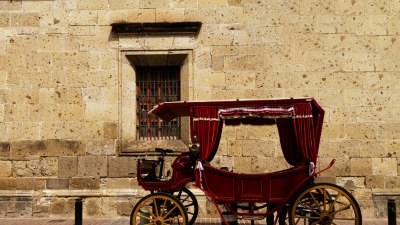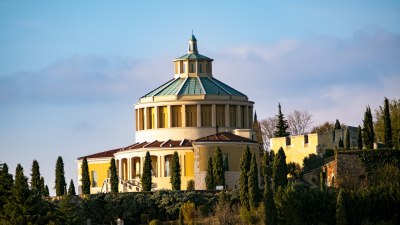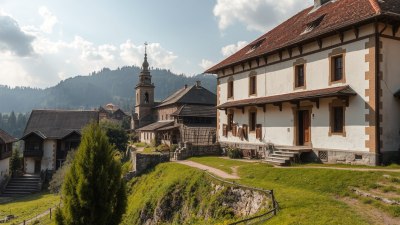Why Walking Through Historic Sites Feels Like Time Travel
Explore how visiting historic sites can transport you through time and connect you with the past.

Walking through historic sites often evokes a strong sense of nostalgia and wonder, much like stepping into a time machine. This sensation is not merely a byproduct of imagination; it is grounded in our sensory perceptions, the stories embedded in the spaces we explore, and the universal human desire to connect with history. In this article, we dissect why this experience feels reminiscent of time travel, examining architectural elements, storytelling, and personal connections to heritage.
The Power of Architecture
Architecture plays a pivotal role in shaping our experiences of historic sites. The buildings, structures, and even ruins of the past embody the craftsmanship, aesthetics, and values of the time when they were constructed. As we walk through ancient cathedrals, medieval castles, or colonial homes, we are encapsulated by the design choices made by past civilizations. Each architectural style, from Gothic to Baroque, tells a story, transporting us back in time. The intricacies of a stone façade or the grandeur of a high ceiling can evoke the emotions of those who once inhabited these spaces.
Sensory Engagement: Visuals and Sounds
The multi-sensory experience of visiting historic sites enhances this feeling of time travel. The sights of age-old artworks, the sounds of footsteps on cobblestones, and even the smell of the aging wood can create a tapestry of experiences that engage our senses fully. When we encounter artifacts, such as ancient pottery or furniture, they spark our imagination, inviting us to contemplate the lives of those who created and used these objects. The more we engage our senses, the more vivid our experience becomes. A rebuild of a busy market, the echo of historical reenactments, or even the gentle rustling of leaves can transport us back to different eras filled with different lifestyles and traditions.
The Stories Behind the Sites
Every historic site carries with it a wealth of narratives that enhance our understanding of the past. Guides, plaques, and brochures share tales of historic events, prominent figures, and everyday life. As visitors, we become active participants in these narratives, imagining what life was like during the time the site was in use. For instance, walking through the ruins of ancient Rome, one might consider the bustling life of a marketplace or the grand debates in the Senate. Storytelling is a powerful element that bridges the gap between the past and present, allowing us to visualize narratives as if they were unfolding in real time.
Personal Connections and Heritage
Our individual backgrounds can deepen the time-travel experience at historic sites. For instance, individuals who have ancestry linked to a site may feel a stronger connection, allowing them to visualize their forebearers walking the same paths. Visiting places important to our cultural heritage creates a bond with history, transforming abstract dates and facts into personal significance. This emotional connection can trigger powerful feelings of belonging, nostalgia, and even identity, enhancing the sensation of time travel. Moments spent in historic settings can lead us to reflect on our place within a broader timeline, fostering a deeper understanding of not just individual history, but collective experiences.
Immersion Through Modern Technology
Technological advances have further enhanced how we experience historic sites. Augmented reality (AR) and virtual reality (VR) allow visitors to immerse themselves in immersive reconstructions of historical environments. AR applications can overlay historical images over current views, revealing what buildings looked like at different points in time. These technologies not only enrich our understanding but also provide a more profound sense of witnessing history firsthand rather than simply reading about it. As technology continues to evolve, the possibilities for experiencing historic sites will expand, allowing for even deeper connections to the past and enhancing our ability to ‘travel’ through time.
Preservation and Conservation Efforts
Efforts to preserve and conserve historic sites ensure their stories are not lost to time. Preservationists work diligently to maintain the integrity of structures while providing informative context for visitors. These efforts play a critical role in helping us connect with history. By walking through a well-preserved site, we gain insights into how people lived, interacted, and thrived, thereby fostering a sense of continuity through generations. Preservation also conveys the importance of protecting cultural heritage, encouraging visitors to appreciate and care for historical sites like custodians of time.
Mindfulness and Reflection
Walking among historic buildings provides an opportunity for mindfulness and contemplation. As we navigate through spaces layered with history, we can reflect on the past, considering how it influences the present. This reflective practice offers a chance to appreciate the complex tapestry of human experiences and reckon with the lessons history offers. Such moments of reflection often lead visitors to contemplate broader themes of resilience, innovation, and the shared narratives that bind societies together over time.
The Impact of Historic Sites on Society
Visiting historic sites allows us to connect not just with the past but also with the present and future. These spaces foster civic engagement and cultural appreciation, contributing to the identity of communities. Schools, local governments, and organizations often collaborate to promote heritage tourism, which educates the public and invigorates local economies. As we engage with these sites, we simultaneously shape a narrative of respect and understanding for different cultures and histories. Walking through historic sites becomes an opportunity for dialogue, remembrance, and reconciliation with our shared pasts.
The Importance of Education
Educational programs at historic sites play a vital role in fostering connections to the past. Schools often arrange field trips to engage students with history in an interactive manner, enhancing curriculum experiences beyond textbooks. Such hands-on engagements can ignite curiosity and inspire future generations to explore their heritage. The more we understand our history, the better equipped we are to navigate present-day challenges with insight and wisdom derived from those who have come before us.
A Journey Across Time
Walking through historic sites offers more than just a tour; it is an opportunity for time travel, mentally transporting us to eras steeped in rich narratives, vivid experiences, and cultural significance. Our senses are engaged, our imaginations sparked, and our connections to history deepened through the stories and environments we explore. As we traverse these landscapes, we become part of a continuum that stretches across generations, reaffirming the importance of understanding and preserving our shared heritage. In a world focused on progress, historic sites stand as bridges to our past, guiding us in navigating the future.











